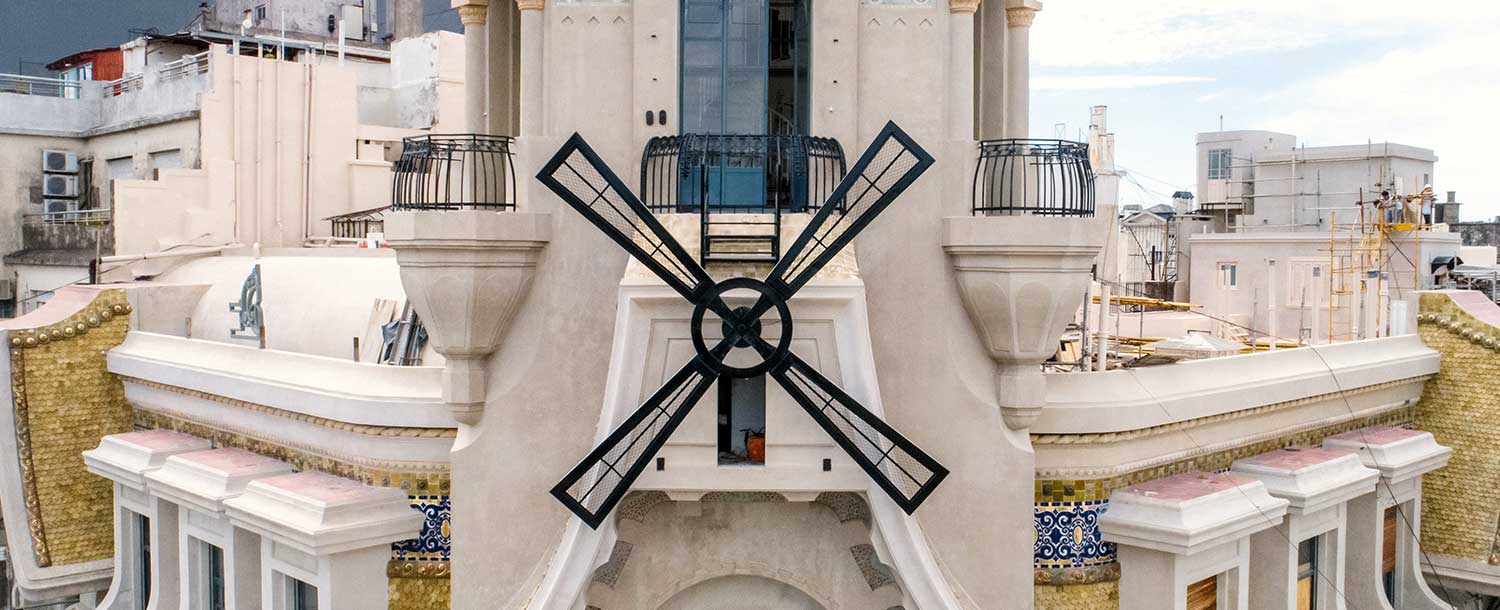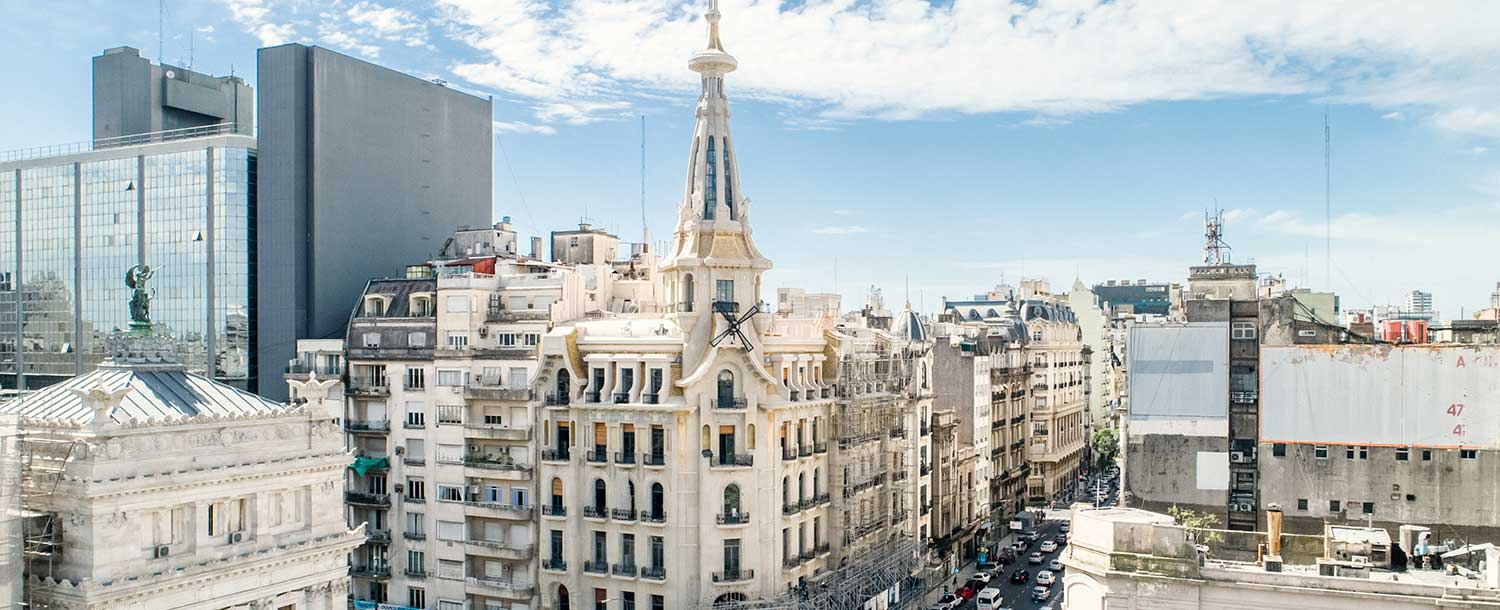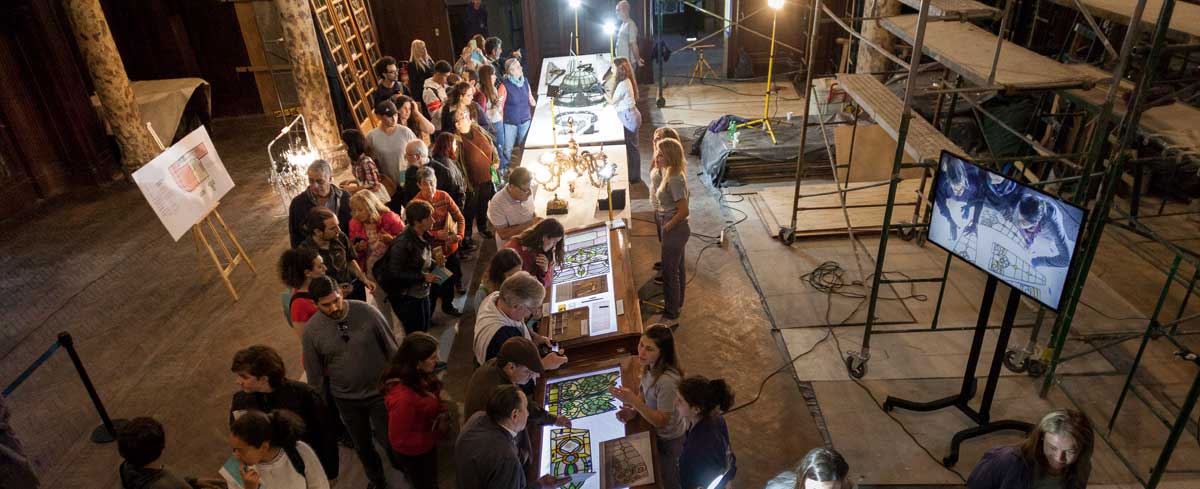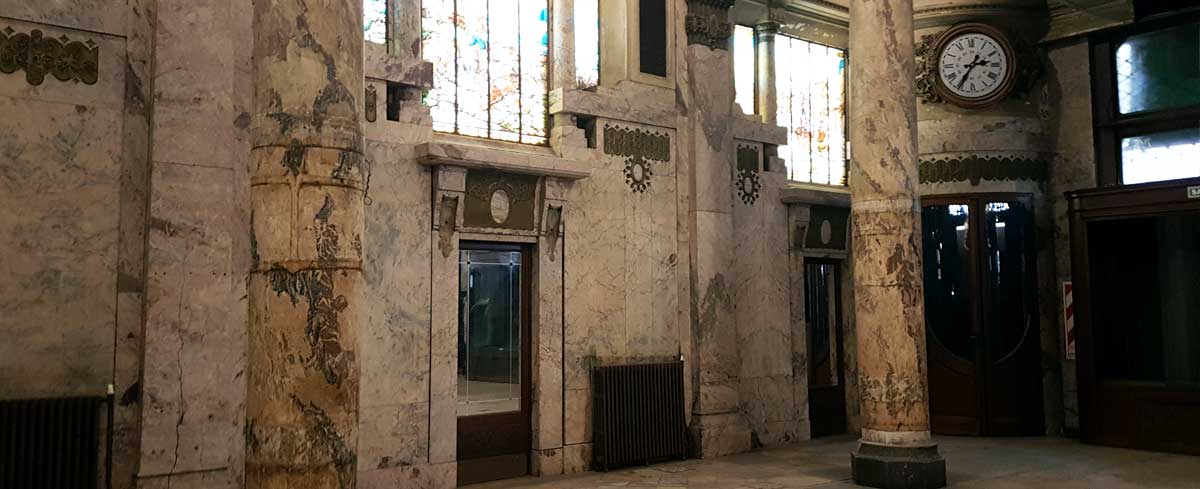Confitería del Molino
The emblematic “windmill cafe” holds more than a century of history.
The beginning
With its grand windmill-sporting facade at the intersection of the avenues Rivadavia and Callao beside Argentina’s National Congress, Confitería del Molino has a history dating back more than 100 years. It began life in the year 1800 when Italian confectioners Constantino Rossi and Cayetano Brenna opened the Confitería del Centro at Rivadavia and Rodríguez Peña. In 1866, they changed the name of their cafe and confectionery house to Antigua Confitería del Molino as a tribute to the newly opened Lorea mill (molino in Spanish), the first steam-powered flour mill in the city.
In 1904, the Italian confectioners expanded their operation and added another establishment on the current site, which they decorated with furniture, marble, excellent glasswork and bronze fittings all specially brought from Italy.
Finally, “Confitería del Molino”
On July 9 1916, on the centenary of Argentina’s independence, the building in its current form was re-inaugurated as Confitería del Molino. With its redesign by Italian architect Francisco Gianotti, it became an icon of Buenos Aires’ Art Nouveau architecture. It suffered a fire in 1930 during the military coup that overthrew the government of president Hipólito Yrigoyen and had to close for almost a year to be refurbished.
As well as proving popular with a great many politicians with its proximity to the congress, over the years the venue also attracted many local celebrities and artists such as Niní Marshall and Libertad Lamarque. Authors like Oliverio Girondo and Roberto Arlt also frequented and wrote about the cafe, and the tango singer Carlos Gardel left his mark here in the form of Leguisamo, a dessert created by Brenna especially for the singer and named after Gardel’s friend, the jockey Irineo Leguisamo.
Shortly after the grand cafe’s closure in February 1997, Madonna filmed a music video in the property while she was in Buenos Aires for the making of the film Evita.
Reconstruction
In 2014, the building was transferred to the powers of the National Congress and the legally bound Molino Building Administrative Commission has since begun work to recover this icon of the city, which was declared a National Historic Monument in 1997.
Currently, a multidisciplinary team of specialists at the National Congress are working to reconstruct this piece of the city’s heritage and return it to its splendour.
Did you know that…?
-
In the year of the Bolshevik revolution, Brenna invented a dessert called "imperial ruso" (“Russian imperial”), which became known in many countries as the Argentine dessert.
-
The lyrics of the tango Gricel written by José María Contursi tell of a true love story between a coupe that would be reunited at this cafe 22 years later.
-
The cafe was often referred to as the “third chamber" of congress because it was a popular meeting place for senators and congressmen from the neighbouring National Congress.
-
The Argentine politician Lisandro de la Torre, for example, drank coffee here every day.
-
Another politician, the socialist Alfredo Palacios drank cognac here as part of his daily routine and would leave his coat here rather than take it into Congress in order to carry less with him but also to have an excuse to join another table of political conversation when he came back to collect it after leaving Congress.




